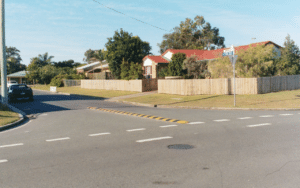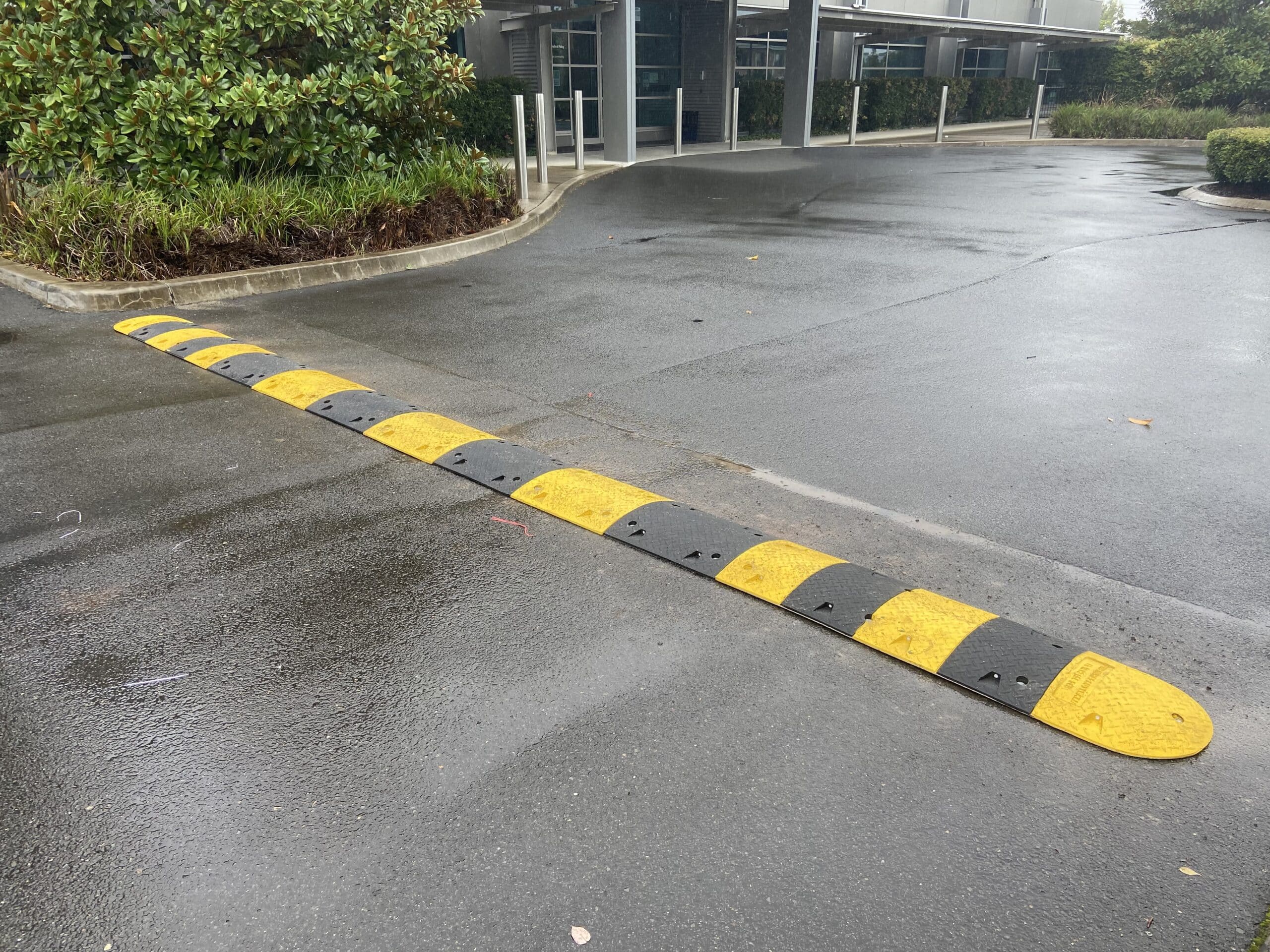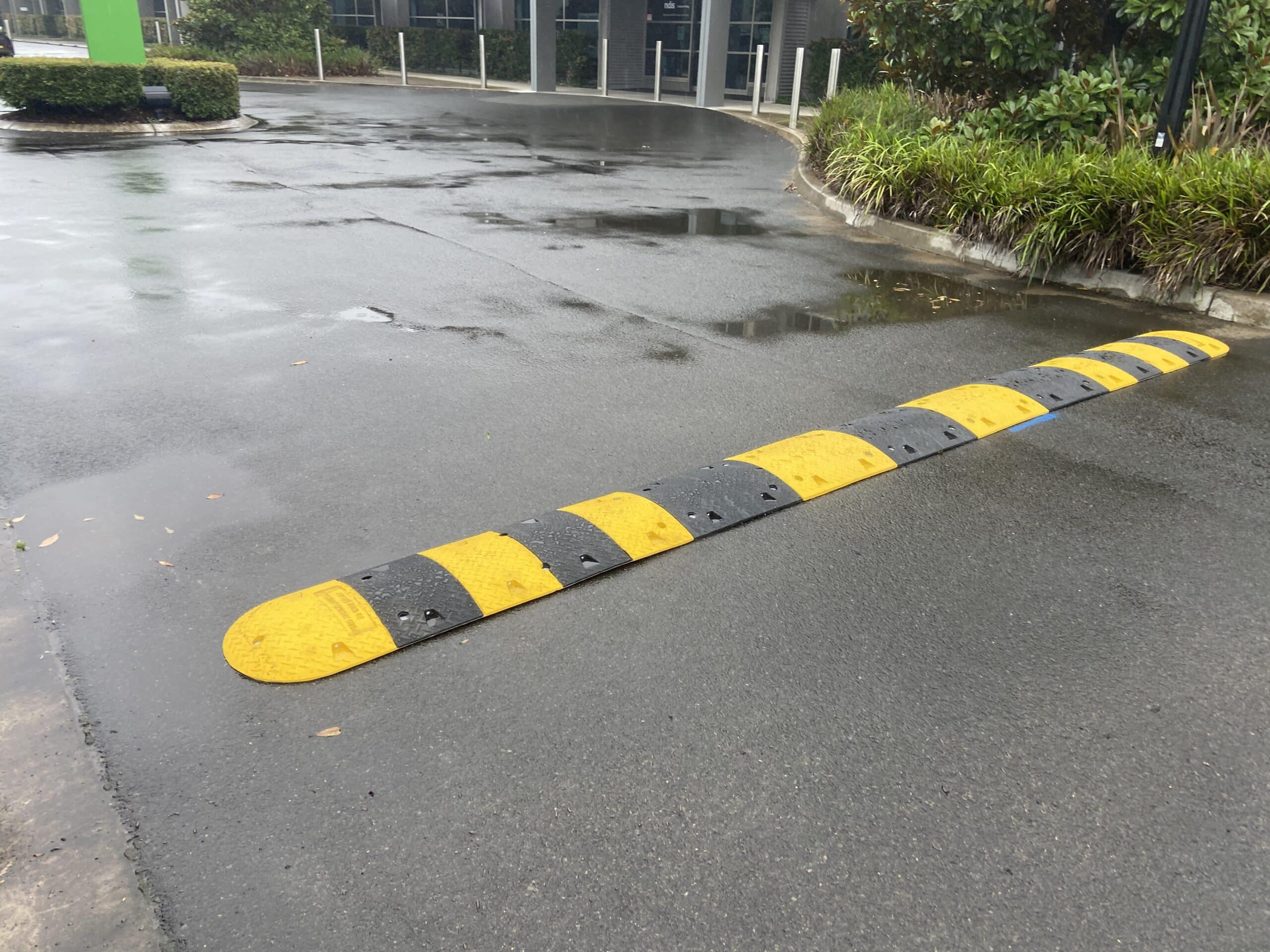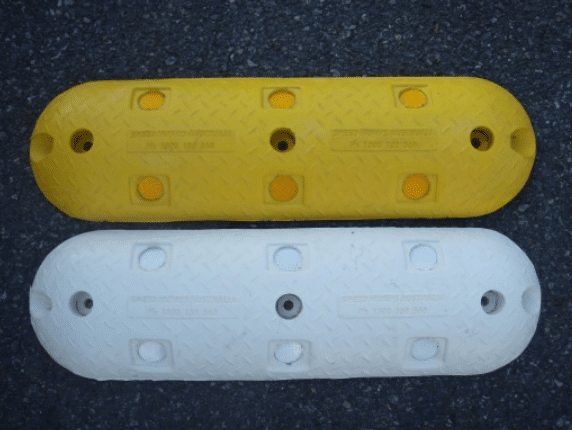

In any thriving community, trust in local government is built not just through policies and promises but through visible action. One of the most immediate and impactful ways to demonstrate care for community wellbeing is through road safety infrastructure, things like speed humps, wheel stops, and rumble bars. These physical features do more than slow cars; they send a strong message: “We take safety seriously.”
Apart from reducing accidents, visible traffic calming also enhances public trust. Investment in road safety infrastructure improves liveability, encourages trusting communities, and demonstrates good council stewardship.

People are visual creatures. We tend to believe what we see, and we trust those who act visibly in our interest. That’s why highly visible road safety installations like speed humps, reflective signage, and rumble bars make such a difference, not just in terms of reducing vehicle speed or preventing accidents, but in shaping how residents perceive their council’s priorities.
Local residents will be more likely to feel heard, looked after, and secure if they can see visible security improvements on their ocal streets. It is particularly important in high-pedestrian areas and areas of higer risk, including near schools, retirement villages, shopping malls, and parks.
Traffic calming refers to the design and implementation of physical changes to roads that slow vehicles and improve safety for pedestrians and cyclists. Here are a few common measures:
While each of these steps has an on-the-ground safety benefit, perhaps its biggest benefit is how prominently it displays the problem: a constant reminder, on a daily basis, that street safety matters in reality, not as a hollow slogan.
It isn’t enough to attend council meetings and issue press releases to be a trusted leader. It takes real, tangible action that will be noticed and felt by people on their daily commutes.
Councils demonstrate initiative, risk management, and a sense of community demand when they invest in road safety infrastructure. This is the ultimate example of forward-thinking government.
Many traffic calming measures are introduced after community consultation or public complaints. By acting on these concerns, councils show that they listen—and act. This responsiveness increases public trust and engagement.
People are far more likely to participate in local governance when they believe their voice leads to results. Installing a speed hump on a busy shortcut or placing rumble bars at a blind corner proves that public feedback is being taken seriously.
The fact that the roads are safer means people feel safer. Parents feel safe allowing children to walk to school. The elderly are safer on roads. Cycling people are safer.
People credit this sense of security to good, caring leadership, and that in turn produces a sense of wellbeing.
Some of the most effective safety measures are the most visible. Here’s how common infrastructure can influence trust:

Beyond their physical purpose of slowing cars, speed humps are highly visible indicators of a council’s commitment to safety. Their bright Yellow and Black colours, reflectors, and accompanying road signage show that lowering traffic speeds is being taken seriously, especially in areas with vulnerable pedestrians.

In parking areas, car parks, and near schools or markets, wheel stops prevent vehicles from overreaching. For a pedestrian, especially someone with a stroller or mobility aid, this simple device reassures them that their safety is being protected.

Rumble bars, which are often used as lane dividers or separation devices, alert motorists by movement and noise. Besides averting accidents, their installation signals a display of vigilance. By installing rumble bars, a council is seen to be acting preventively instead of acting when disaster has occurred.
These tactics are a worthwhile investment for councils to promote public attitudes and safety as they are impact-heavy but not costly.
Across Australia, community surveys have consistently shown that residents rate road safety and traffic management among their top concerns. In areas where councils have implemented visible traffic calming, feedback has often included:
For example, after a Victorian Council installed a series of speed humps and pedestrian islands in school zones, community feedback highlighted not only reduced traffic speed but increased confidence in local governance. “It shows they actually care,” one parent commented.
Such stories are not uncommon. When infrastructure aligns with public needs, and is plainly visible to the community, it strengthens the social contract between council and citizen.
We live in a time when trust in institutions is constantly being tested. Councils can no longer rely solely on annual reports or community bulletins to prove they’re doing the right thing. Residents want to see real improvements in their daily lives, and road safety infrastructure is one of the clearest indicators of that progress.
By making safety visible, councils communicate that they are investing in people, not just policies. They’re fostering environments where children can play safely, where the elderly can cross roads without fear, and where everyone, from cyclists to motorists, feels protected.
Speed humps. Wheel stops. Rumble bars. These may seem like small additions to a roadway, but they have big implications. They serve a critical safety function while also reflecting something deeper: leadership that can be trusted.
When residents can see safety measures on their streets, it reinforces their belief in the integrity, responsiveness, and care of their local government. In a world of uncertainty, that kind of visible action builds something priceless: trust.
So whether you’re a council member, urban planner, or an engaged citizen advocating for change, remember this: community trust begins where safety is seen.



For 10 years, our focus has been on one thing: to provide one style of product and to do it well.
Our wheel stops, speed humps and rumble bars meet Australian Standards, don’t fade, and we’ve never needed to replace one.

For 10 years, our focus has been on one thing: to provide one style of product and to do it well.
Our wheel stops, speed humps and rumble bars meet Australian Standards, don’t fade, and we’ve never needed to replace one.